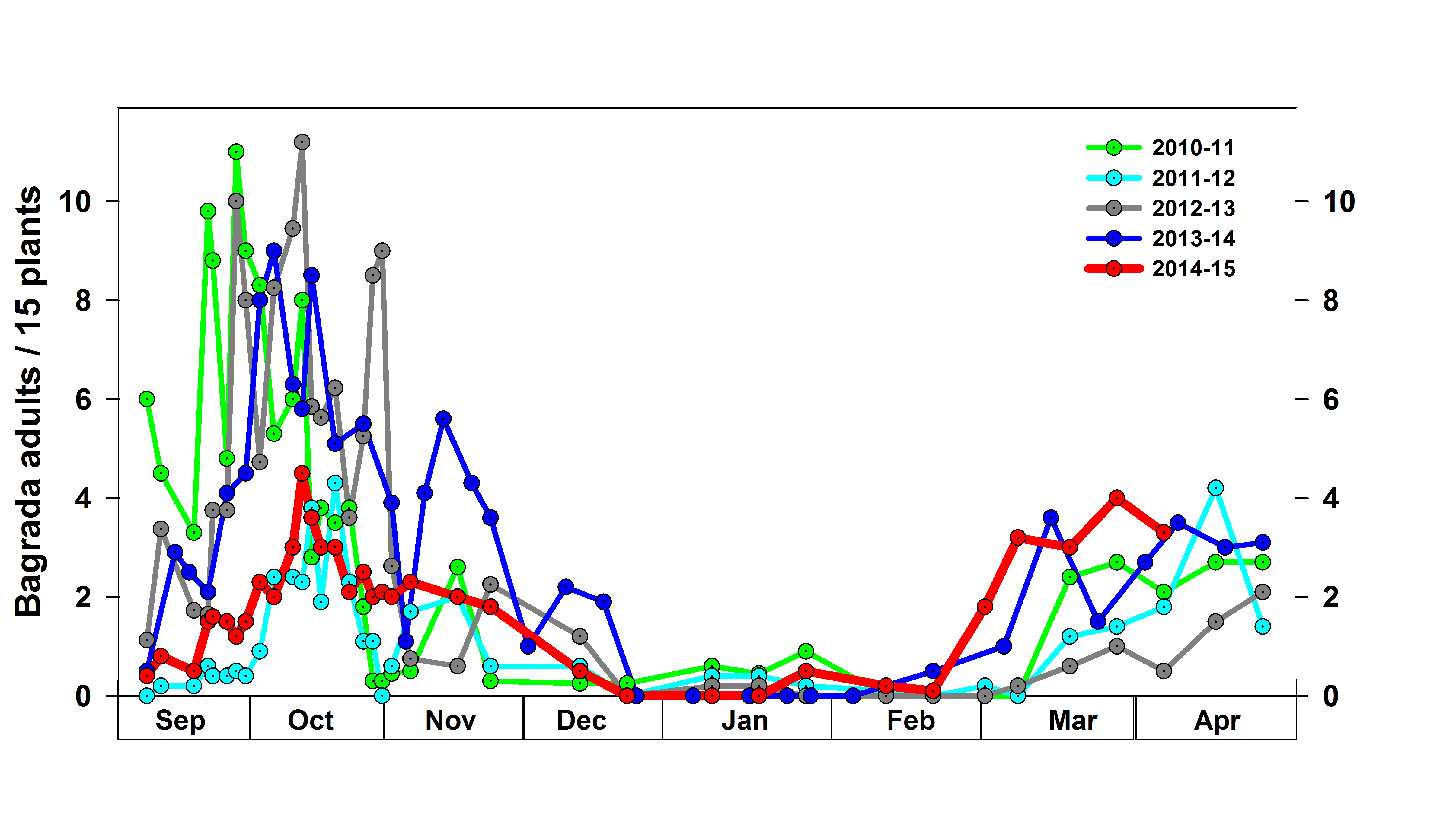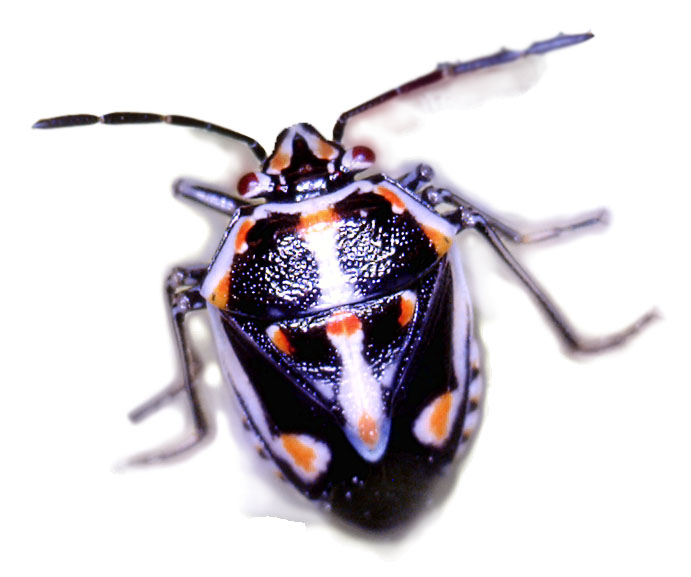
|
|
|
|

|
|||
|
|
|||
This is the time of the year that bagrada bugs typically begin to infest desert
cole crops. Based on trials conducted on untreated broccoli plots at YAC, mid-September
has historically been the time that bagrada begin to show up in large numbers, whereas
peak abundance of bagrada bug has occurred from late September to early October
(see graph below). Reports of bagrada in commercial cole crops are beginning to
trickle in from PCAs and so far, the pressure does not appear to be as heavy as
we’ve seen in the past few years. However, pressure in Imperial Valley appears
to be heavy on organic crops again based on reports local PCAs. So, what should
a PCA expect for this season? Can’t say for sure, but don’t be complacent
just because you’re not finding a lot of bagrada adults on your first few
fields. It would be wise to assume they will eventually show up in some intensity
in some of your acreage, and you should prepare for them accordingly. Here are a
few management tips to consider. First, we’ve learned through research that
when monitoring for bagrada bugs at stand establishment PCAs should focus on fresh
feeding signs on new plant tissue, and adults later in the day when they are most
active. Second, research in the field has also indicated that direct-seeded and
transplanted crops are susceptible to bagrada bug infestations during stand establishment
and up to the 6 leaf stage. Furthermore, it doesn’t take a large number of
bagrada adults to cause significant stand losses or crop injury. In untreated plots,
we have consistently observed significant damage (15-20% blind plants) to direct
seeded plants during the first 7 days after emergence (cotyledon to 1-leaf Stage)
with only finding an average of 1 bagrada adult / 6 row. Thus, we recommend that
if you readily find 5% or more of plants with feeding signs during stand establishment,
control should be initiated immediately. This can include chemigation or aerial
applications with pyrethroids. Contact insecticides such as pyrethroids, Lannate,
and Lorsban should be used once stands are lined out and pipe is pulled. After stands
are established and plant size increases up to the 2 leaf stage, or on tagged transplants,
consider alternating to dinotefuron (Venom/Scorpion) for protecting plants from
bagrada feeding. This neonicotinoid will also provide knockdown of adult whiteflies
and nymphs. Also, growers who planted Nipsit (clothianidin), should begin to closely
monitor for fresh feeding damage around 14 days after emergence. More information
on bagrada bug management on fall cole crops can be found in:Bagrada
Bug Management Tips for the Low Desert and
Susceptibility of Bagrada hilaris to Insecticides in Laboratory and Greenhouse Bioassays.

Bagrada bug abundance on untreated broccoli plants at Yuma Ag Center, 2010-2015.

Remember, When in Doubt . . . . . “SCOUT”
Click picture to listen to John’s update
To contact John Palumbo go to: jpalumbo@ag.arizona.edu |
|||
| Back | |||
|
For questions or comments on any of the topics please contact Marco Pena at the Yuma Agricultural Center.
|
|||
|
Home |
Cotton | Veggies |
Forages | Grains
| Citrus |
Crop x Crop Insects | Diseases| Weeds | Pesticides | Economics | News | Weather | Research | Photos | Contacts | General Info. Copyright © 2001 University of Arizona, College of Agriculture and Life Sciences Webmaster: Al Fournier (acis@ag.arizona.edu) |
|||
